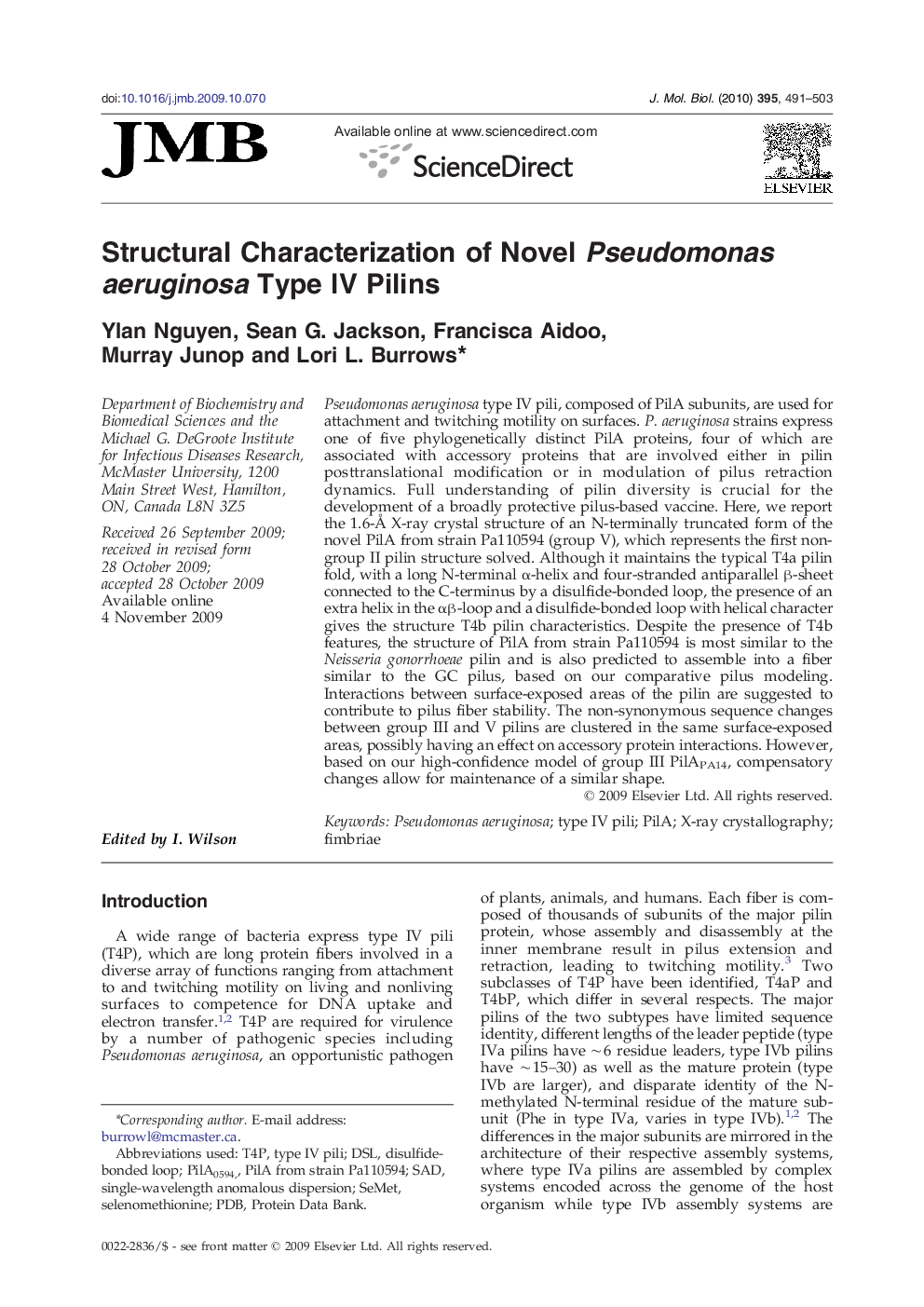| Article ID | Journal | Published Year | Pages | File Type |
|---|---|---|---|---|
| 2186152 | Journal of Molecular Biology | 2010 | 13 Pages |
Pseudomonas aeruginosa type IV pili, composed of PilA subunits, are used for attachment and twitching motility on surfaces. P. aeruginosa strains express one of five phylogenetically distinct PilA proteins, four of which are associated with accessory proteins that are involved either in pilin posttranslational modification or in modulation of pilus retraction dynamics. Full understanding of pilin diversity is crucial for the development of a broadly protective pilus-based vaccine. Here, we report the 1.6-Å X-ray crystal structure of an N-terminally truncated form of the novel PilA from strain Pa110594 (group V), which represents the first non-group II pilin structure solved. Although it maintains the typical T4a pilin fold, with a long N-terminal α-helix and four-stranded antiparallel β-sheet connected to the C-terminus by a disulfide-bonded loop, the presence of an extra helix in the αβ-loop and a disulfide-bonded loop with helical character gives the structure T4b pilin characteristics. Despite the presence of T4b features, the structure of PilA from strain Pa110594 is most similar to the Neisseria gonorrhoeae pilin and is also predicted to assemble into a fiber similar to the GC pilus, based on our comparative pilus modeling. Interactions between surface-exposed areas of the pilin are suggested to contribute to pilus fiber stability. The non-synonymous sequence changes between group III and V pilins are clustered in the same surface-exposed areas, possibly having an effect on accessory protein interactions. However, based on our high-confidence model of group III PilAPA14, compensatory changes allow for maintenance of a similar shape.
